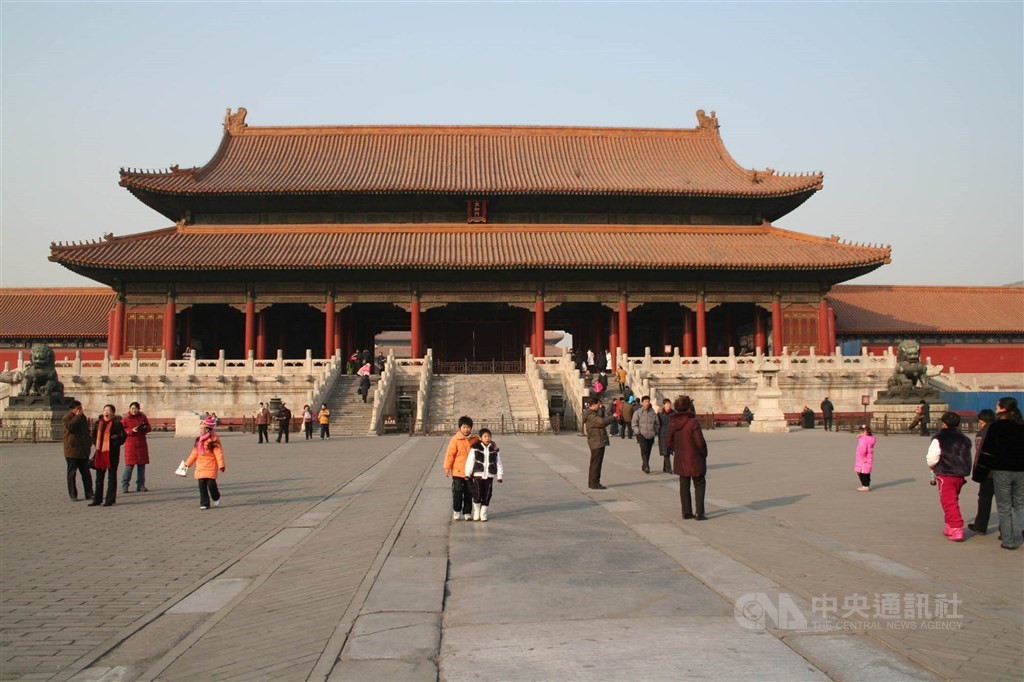


Taipei, May 19 (CNA) There has been a sizable generational divide in travel to China among Taiwanese over the past 16 years, with younger travelers less likely to go there than older individuals, according to a breakdown of national travel statistics.
Since direct aviation links were opened across the Taiwan Strait in 2008, 38.15 million Taiwanese had traveled to China as of the end of 2023, making it the second most popular outbound destination for Taiwanese after Japan (39.55 million visits), according to Taiwan’s Tourism Administration.
Among those travelers, the most visits to China (9.42 million) were made by people in the 50-59 age group, followed by the 40-49 age group with 9.35 million visits.
Younger travelers, aged 20-29, only accounted for 2.9 million visits, indicating a significant gap in travel preferences.
By comparison, people in the 20-29 age group visited Japan 6.55 million times during the same period, or 125 percent more than the number of visits to China, statistics showed.
Part of that gap may have been because of the high number of people who have worked in China or traveled between Taiwan and China on business, a group that would tend to be older.
Ringo Lee (李奇嶽), public relations representative of the Travel Quality Assurance Association, said, however, that the older generation was also more inclined to visit China for leisure travel compared to younger people based on his experience with group tours.
Part of the reason was the nature of Chinese travel, which emphasizes scenic beauty and historical exploration, Lee said.
“(Younger people) prefer lively, popular, glamorous, and shopping-oriented experiences, enjoying food and buying things. They don’t visit temples,” he said.
Huang Cheng-tsung (黃正聰), an associate professor at Providence University’s Department of Tourism, said young people may not find it cool to travel to China.
“If young people take photos in China and share them, they might not receive positive feedback,” he said.
Cultural affinity also affected people’s choice of destination, both Lee and Huang said.
Older generations have a greater understanding of China due to the education they received, resulting in higher interest in it, they said.
Meanwhile, politics has also factored into travel decisions and perhaps made younger people more reluctant to travel to China in recent years, Lee said.
After President Tsai Ing-wen (蔡英文) took office, the number of people traveling to China continued to rise, reaching a peak of 4.17 million in 2018.
But that number began to decline in 2019, particularly in July and August, coinciding with the massive anti-extradition protests in Hong Kong.
The fall in the number of people visiting China was seen across all age groups, tumbling 11.16 percent year-over-year in July 2019 and 10.64 percent in August, but it was especially noticeable among young people aged 20-29 and 30-39.
Visits to China made by individuals in the 20-29 age bracket fell by 19.8 percent year-over-year in July 2019 and 12 percent in August 2019, while for the 30-39 age group, visits tumbled 16 percent in July and 17 percent in August.
Regardless of age group, travel to China took a massive hit because of the COVID-19 pandemic and has been extremely slow to rebound, largely because of Taiwan’s continuous ban on group travel to China, according to Lee.
When China’s border reopened in 2023, Taiwanese visited only 1.76 million times, compared to over 4 million visits a year before the pandemic.
Taiwan initially planned to resume organized tours to China in August 2023 but later postponed it to February 2024 as cross-strait tensions persisted.
By February, however, China had not agreed to allow its tour groups to visit Taiwan, and Taiwan decided, therefore, to once again ban local tour groups from heading to China in the name of reciprocity.
As a result, while tours scheduled between March 1 and May 31 this year were able to proceed, those scheduled for after June 1 were canceled.
The policy U-turn was regrettable, Lee said, citing high booking demand, particularly for tours to Xinjiang Province and Inner Mongolia in China.
“Of course, we hope that tourism exchanges between the two sides can be restored as soon as possible,” Lee said, noting that cross-strait tourism accounts for about 40 percent of the market for Taiwan’s aviation and travel sector.
Huang said non-group tour visits by Taiwanese to China reached around 200,000 per month in the second half of 2023, showing a recovery of about 60 percent compared to pre-pandemic levels.
He suggested, however, that even if cross-strait tourism completely reopened, Taiwanese visits to China might only reach about 80 percent of the pre-pandemic level due to political factors.
“China’s stance toward Taiwan has been quite firm in recent years,” Huang said. “Many people may not feel comfortable with this.”